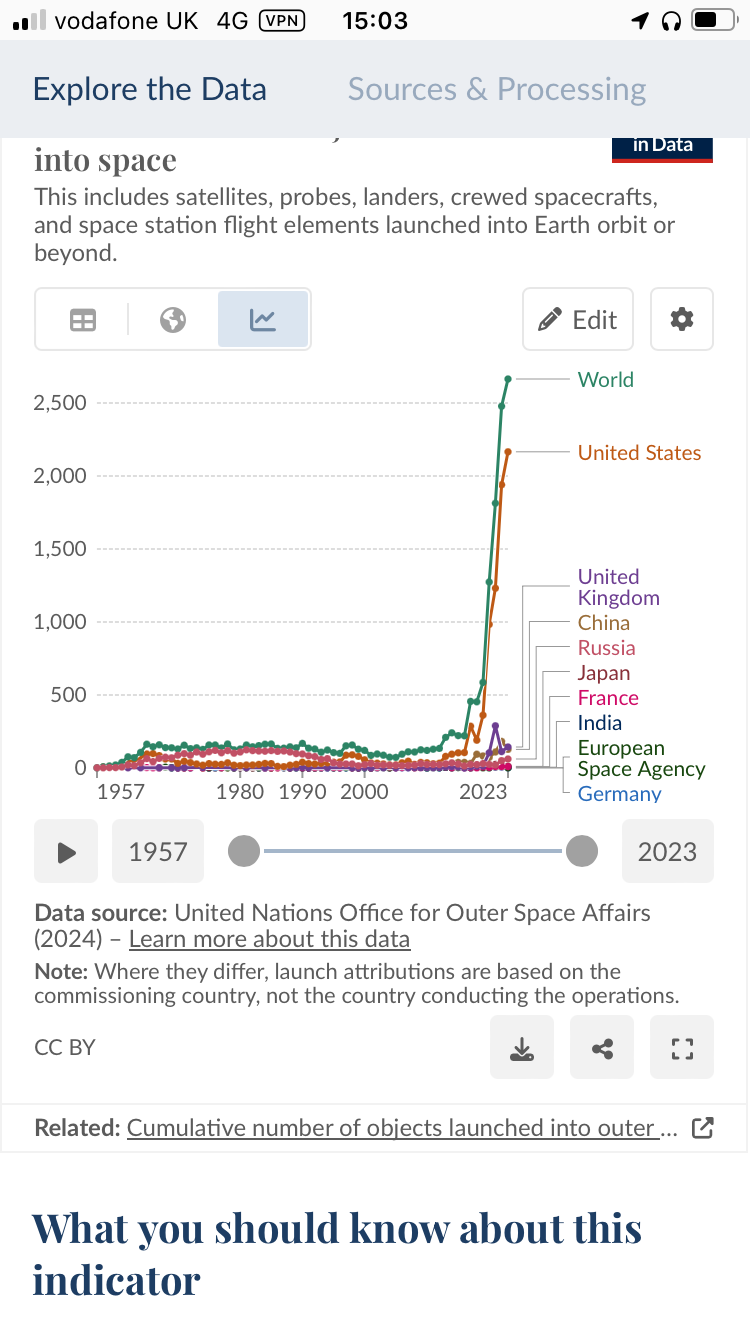Is the spaceX satellite constellation orbital debris or just radiolight orbital pollution?
Both - they have a very limited life span, die in their droves during solar storms, and because of being so low and having no way to be recovered, their deorbiting into the upper atmosphere is going to cause massive damage to the ozone layer over the next 30 years.
Here’s a decent article - https://www.sciencealert.com/satellites-like-starlink-could-pose-new-threat-to-our-healing-ozone-layer
And the study it’s based on - https://agupubs.onlinelibrary.wiley.com/doi/10.1029/2024GL109280
Forecasts point to future reentry rates of 800–3,200 metric tons per year for satellites, and up to 1,000 metric tons per year for launch vehicles (Organski et al., 2020). The engineering approach of design-for-demise (Kärräng et al., 2019; Waswa & Hoffman, 2012) and the deployment of active debris removal solutions may further exacerbate the aforementioned trend. As for natural sources, meteoroids enter the atmosphere at an average rate of over 11,750 metric tons per year (Drolshagen et al., 2017).
Meteoriods cause 11,750 metric tons…and this papers estimate is 800-3200 tons… I think you’re reading to much into that paper.
I think you didn’t read that paper at all. It’s not just about mass, it’s about size of object, reentry angle, and the enduring quantity of particalized aluminium that stays in the upper atmosphere. Specifically that these satellite deorbits are predicted to raise that amount over the naturally occurring level by several hundred percent. That’s very much like saying “but volcanoes make co2!” - yeah, but adding a bunch of extra on top doesn’t mean the system will automatically remain stable.
That’s not how that works at all, we’ve been launching shit into space for decades now and tons of it returns, these sats from starlink are not magically going to create more than what the natual amount is showing up via meteoroids are. On top of that their estimates have a huge deviation, 800 vs 3200 is not exactly accurate.
That’s not how what works? Lumps of rock of varied composition burning up aren’t going to produce the same effects, gram for gram, as lumps of a majority of high-purity aluminium. There is little evidence that meteorites produce specifically high levels of aluminium oxide particles when entering the atmosphere (at least that I can find, I’m not dogmatic about this, I just can’t find any actual evidence that disproves this idea. I wouldn’t mind being wrong!) Even the base estimates seem to suggest that the AlO particles will remain in the upper atmosphere for decades. AlO is proven to be a catalyst for ozone depletion, there’s quite a lot of research about that in relation to rocket exhaust gas.
The numbers of launches, satellites, and deorbits are rising pretty rapidly, so “launching shit for decades” doesn’t really mean as much as you think -
I was pulling the number from your own paper you presented…so is your paper wrong then?
spaceX satellite constellation orbital debris
Starlink satellites orbit at only 500 km, and can actively conduct collision avoidance maneuvers, so the chance that they generate dangerous debris is quite low. Most problematic orbital debris are from unpassivated upper stages and government ASAT tests.
Your comment vs the other response I got to this seem to clash.
And I am calling them as a whole orbital debris. Not what they may break up into.
I am calling them as a whole orbital debris
Ah, the term “orbital debris” refers to “defunct human-made objects in orbit which no longer serve a useful function”. Operational satellites do not fall into this category.
As for aluminum oxide pollution in the stratosphere, that is a serious issue which SpaceX needs to address. However, I’m not sure that stratospheric pollution would fall under the jurisdiction of NASA’s new orbital debris division.
Sadly no mention of fund increases?
Unfortunately not, but the consolidation might free up resources for other projects.
Creating a new department does not “free up resources.”
It depends, while a new division would create new administrative jobs, director, managers, etc
Currently 3-4 people could be doing the same work in different areas. Not only that, you now have multiple versions of the same data floating around. Which leads to people having to track down why it’s different.
I’m not willing to accuse NASA of being inefficient with Budget or time management. I read this as “unfortunately NASA has to work and plan around all of our space garbage instead of just the work they want to be doing.”
How about NASA establish a Life Boat division first for the ISS? It’s mind boggling that there is no standby escape vehicle on the ISS to abandon ship. No, just because it is highly experimental doesn’t mean NASA can ignore hundreds of years of best practices.
mind boggling that there is no standby escape vehicle on the ISS
Starliner notwithstanding, that’s pretty much what they do with Dragon and Soyuz, which serve as lifeboats for the entire duration of the mission. Even if they just have to relocate a capsule from one docking port to another, they make the entire crew get inside to ensure that there are never more people on station than there are seats on a ride home.

